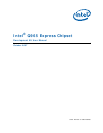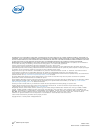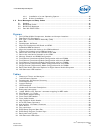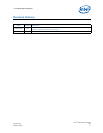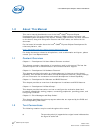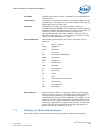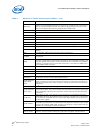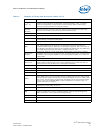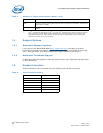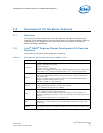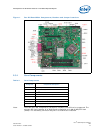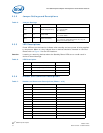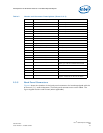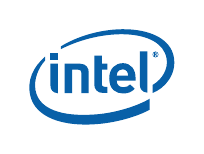
Intel
®
Q965 Express Chipset
October 2007 DM
Order Number: 315664-002US 8
About This Manual—Intel Q965 Express Chipset
Variables Variables are shown in italics. Variables must be replaced with
correct values.
Instructions Instruction mnemonics are shown in uppercase. When you are
programming, instructions are not case-sensitive. You may use
either upper-case or lower-case.
Numbers Hexadecimal numbers are represented by a string of
hexadecimal digits followed by the character H. A zero prefix is
added to numbers that begin with A through F. (For example, FF
is shown as 0FFH.) Decimal and binary numbers are
represented by their customary notations. (That is, 255 is a
decimal number and 1111 1111 is a binary number.) In some
cases, the letter B is added for clarity.
Units of Measure The following abbreviations are used to represent units of
measure:
A amps, amperes
Gbyte gigabytes
Kbyte kilobytes
K kilo-ohms
mA milliamps, milliamperes
Mbyte megabytes
MHz megahertz
ms milliseconds
mW milliwatts
ns nanoseconds
pF picofarads
W watts
V volts
μA microamps, microamperes
μF microfarads
μs microseconds
μW microwatts
Signal Names Signal names are shown in uppercase. When several signals
share a common name, an individual signal is represented by
the signal name followed by a number, while the group is
represented by the signal name followed by a variable (n). For
example, the lower chip-select signals are named CS0#, CS1#,
CS2#, and so on; they are collectively called CSn#. A pound
symbol (#) appended to a signal name identifies an active-low
signal. Port pins are represented by the port abbreviation, a
period, and the pin number (e.g., P1.0).
1.3 Glossary of Terms and Acronyms
This section defines conventions and terminology used throughout this document.



